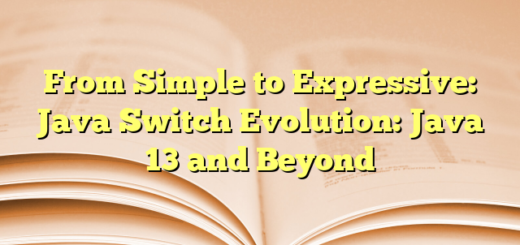Unveiling the Depths of Java Streams: A Journey into Internal Mechanics, Parallelism, Statefulness, and Short-Circuiting
Java Streams are a powerful addition to the Java programming language introduced in Java 8. They provide a functional approach to processing collections of objects in a concise and expressive manner. Understanding the internals of Java Streams involves grasping concepts such as stream operations, intermediate and terminal operations, parallelism, stateless and stateful operations, and short-circuiting.
Overview of Stream Operations:
- Intermediate Operations:
- These operations are invoked on a stream and return a new stream as a result. Examples include
filter(),map(),sorted(),distinct(), etc. - Intermediate operations are typically lazy, meaning they do not process elements until a terminal operation is called.
- These operations are invoked on a stream and return a new stream as a result. Examples include
- Terminal Operations:
- These operations are responsible for producing a result or a side-effect and terminate the stream. Examples include
collect(),forEach(),reduce(),count(), etc. - Terminal operations trigger the execution of intermediate operations, known as “lazy evaluation.”
- These operations are responsible for producing a result or a side-effect and terminate the stream. Examples include
How Streams Split and Work:
- Splitting:
- When working with parallel streams, Java may split the stream into multiple segments to be processed concurrently.
- The splitting process is handled internally by the Java Stream framework and depends on various factors like the source of the stream, available resources, and characteristics of the stream operations.
- Processing:
- Each segment of the stream is processed independently, potentially on different threads, to maximize parallelism and performance.
- The Stream framework utilizes the Fork/Join framework introduced in Java 7 for efficient parallel processing.
Parallelism:
- Parallel Streams:
- Parallel streams allow for concurrent processing of elements, potentially leveraging multiple CPU cores for improved performance.
- They are created using the
parallel()method on a stream. - The Stream framework internally manages the parallel execution, splitting the stream as needed and merging results.
Stateless and Stateful Operations:
- Stateless Operations:
- Operations such as
filter(),map(), andsorted()are stateless. - Stateless operations do not rely on any mutable state external to the operation itself.
- They can be easily parallelized because they do not share state between elements.
- Operations such as
- Stateful Operations:
- Operations such as
distinct()andsorted()without a specified comparator are stateful. - Stateful operations rely on shared mutable state or context between elements.
- Parallelizing stateful operations may require additional synchronization overhead and might not yield the same performance benefits as stateless operations.
- Operations such as
Short-Circuiting:
- Short-Circuiting Operations:
- Certain stream operations, both intermediate and terminal, support short-circuiting behavior.
- Short-circuiting operations optimize stream processing by terminating early based on a condition without processing the entire stream.
- Examples include
findFirst(),findAny(), andlimit(n).


